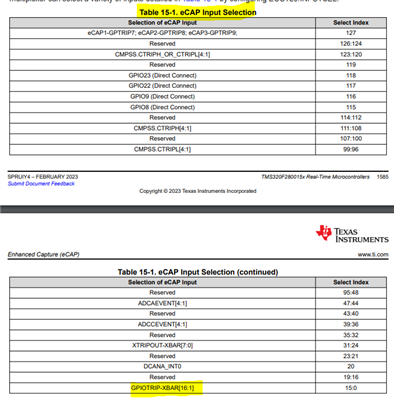Other Parts Discussed in Thread: TMS320F2800157
Hello,
There is a requirement to measure the duty count of PWM signal generated by ePWM module by using eCap module. I have seen some of the example for it, which is describing that for measurement external connection should be there.
1) Is there any possibilities that without any external connection ecap module can measure duty of PWM signal generated by ePWM module?
Thank you.
Regards,





